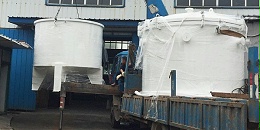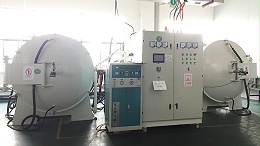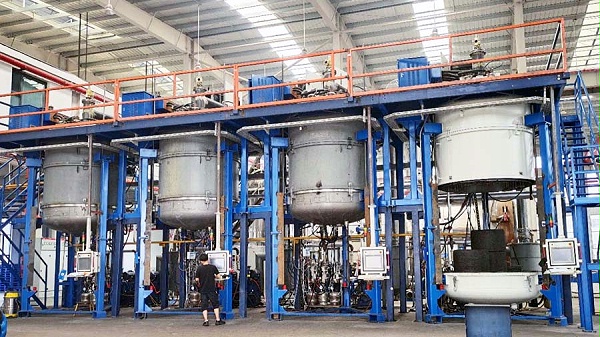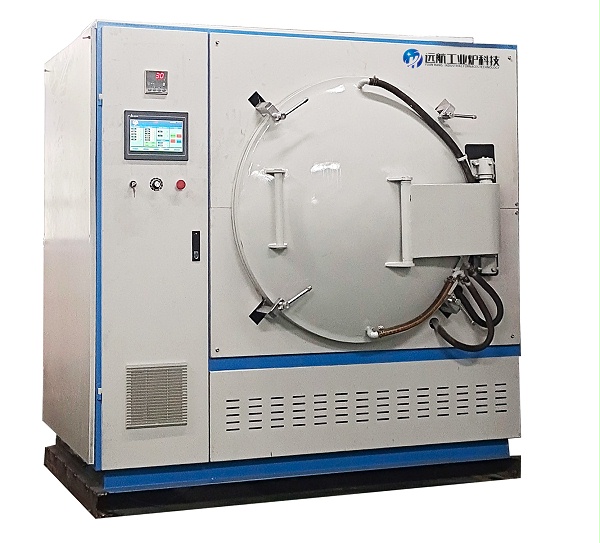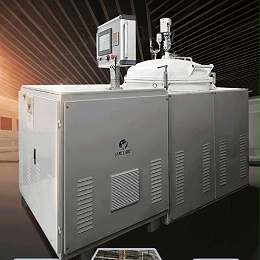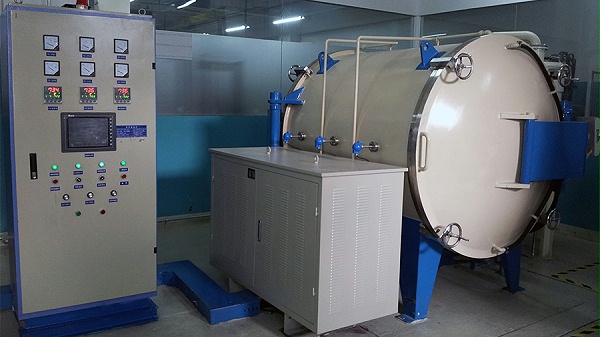取消
真空炉中的硅碳棒理化指标和不同气氛下影响及解决办法
真空炉中的 硅碳棒元件在空气中使用到800℃时开始氧化,温度达到1000-1300℃时,发热部表面生成一层二氧化硅保护膜,1300℃时结晶出方石英,在1500℃时,保护膜达到一定的厚度,从而使元件的氧化速度变得极为缓慢,趋于稳定。如果继续升温至1627℃以上时,则保护膜受到破坏,氧化速度显著增加,造成元件过早损坏。
硅碳棒元件在使用过程中虽然氧化极为缓慢,但长时间运行仍然会导致电阻值增大,这种现象叫做“老化”。为了减缓“老化”速度,在特殊的气氛条件下,我们可提供不同类型保护涂层的元件来提高其使用寿命。
|
密度 Bulk density |
2.5 g/cm3 |
|
气孔率 Porosity |
23% |
|
执传导率 Thermal Conductivity (1000°℃) |
14~19W/m-C |
|
抗折强度 Rupture strength |
50MPa (25℃) |
|
比热 Specific Heat |
1.0ki/kgC(25~1300C) |
|
热膨胀系数 Coefficient of thermal expansion (1000℃ |
4.5x 105 |
|
气氛 Atmosphere |
对元件的影响 Effect |
解决办法 Solution |
推荐涂层 Recommend Coat |
|
水蒸汽和湿气 Vapor and Moisture |
比在干燥大气中使用寿命缩短约20% Service life shortened 20% than in dry air |
新炉子运行或旧炉子长时间不工作再使 用时,要先低温充分干燥后再升温 New furnace or old furnaces not work long time, to dry at low temperature completely and then heat up |
A涂层 A coat |
|
氮气 Nitrogen gas |
温度超过1400度时氮气与碳化硅反应生成 氮化硅,使元件变脆,寿命缩短,受露点 影响与氢气的状况相同 Above 1400°C, nitrogen will react with SiC to form silicon nitride, elements will become fragile and service life shortened. The effect by dew point is same as H2 |
建议炉温在1300度以下使用,表面负荷 尽量小 The recommended furnace temperature not higher than 1300°C, surface loading as low as possible |
B涂层 B coat |
|
氢气 Hydrogen |
元件上升到1350度以后电阻急速增加,机 械强度也下降,而且根据气体干湿的不同 寿命也差别很大 The mechanical strength decreasing when elements temperature exceeds 1350°C, and also service life much depends on intensity of moisture. |
建议炉温在1300度以下使用,表面负荷 小于5W/CM2 Operation temperature lower than 1300°C, surface loading less than 5W/CM2 |
C涂层 C coat |
|
氨气 Ammonia |
与氢气、氮气的状况相同 Same as hydrogen and nitrogen |
建议炉温在1300度以下使用,表面负荷 小于5W/CM2 Operation temperature lower than 1300oC, surface loading less than 5W/CM2 |
B涂层 C涂层 B coat C coat |
|
分解气体 Disassociated gas (Mixture of N2, CO, C02 , h2, ch4 ) |
加热过程中元件表面附着分解后的碳黑, 造成棒体疏松 Carbon black from decomposed hydrocarbon on elements surface will cause elements rod loose. |
经常向炉内输送空气,让多余的碳燃烧。 在炉子构造方面,保持加热元件间有足 够的间隔以防止短路. Introducing air into furnace frequently to burn up additional Carbon. At side of furnace design, keep enough space between elements to prevent short circuit. |
|
|
硫 (s. S2) |
元件温度升到1300度后, 元件表面被 侵蚀,电阻急剧增加 Above 1300°C, surface of elements will be corroded and resistance increasing rapidly. |
将元件温度控制在1300度以下 Keep elements temperature lower than 1300°C |
|
|
真空 Vacuum |
在高真空中不能生成二氧化硅保护膜,碳 化硅自行分解,寿命缩短 SiO2 protect film will not be formed, SiC decomposed itself and service life shortened. |
在0.13Pa以上的压力和1100 度以下 的炉温使用 Using in pressure over 0.13Pa and furnace temperature under 1100°C |
|
|
其他 Others |
由被处理物产生的各种物质,如铅、歸、 碱金属的化合物与元件反应,使其寿命 缩短 Various substances from treated materials, such as Pb, Sb, alkali metal react with elements, which may shorten elements service life. |
预先将这些物质从处理物中除掉,炉内 设排气口以便减弱其影响 To get rid of these substances in advance, design gas outlet in furnace in order to decrease the effect. |
D涂层 D coat |
